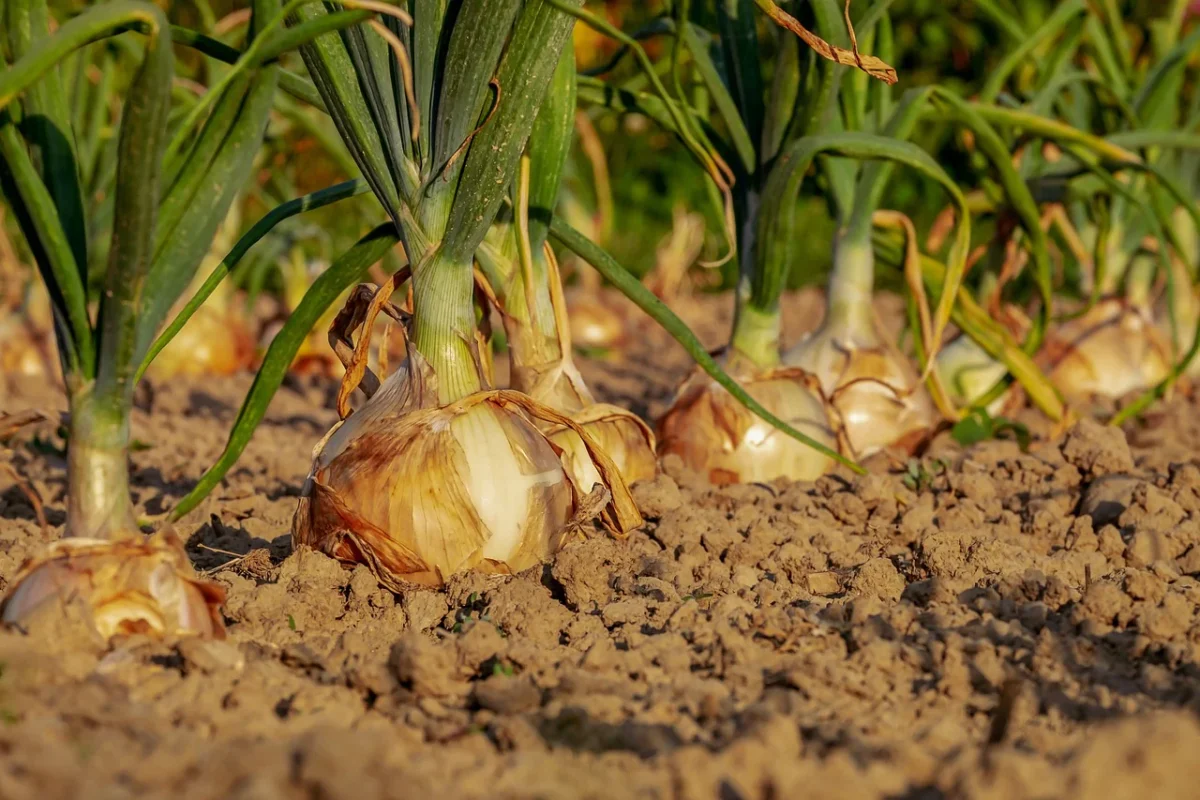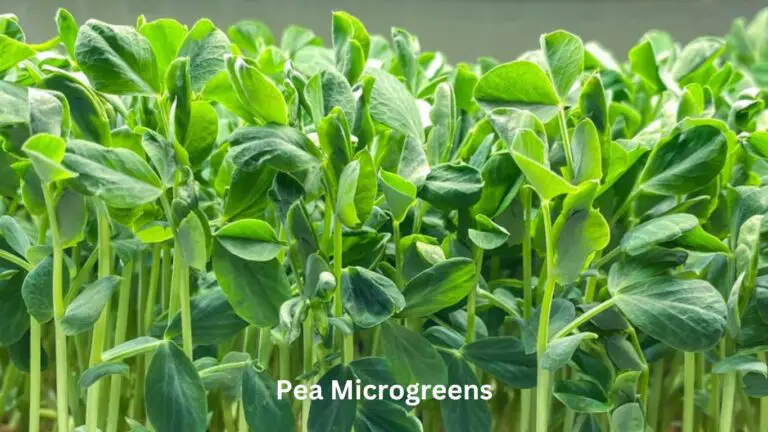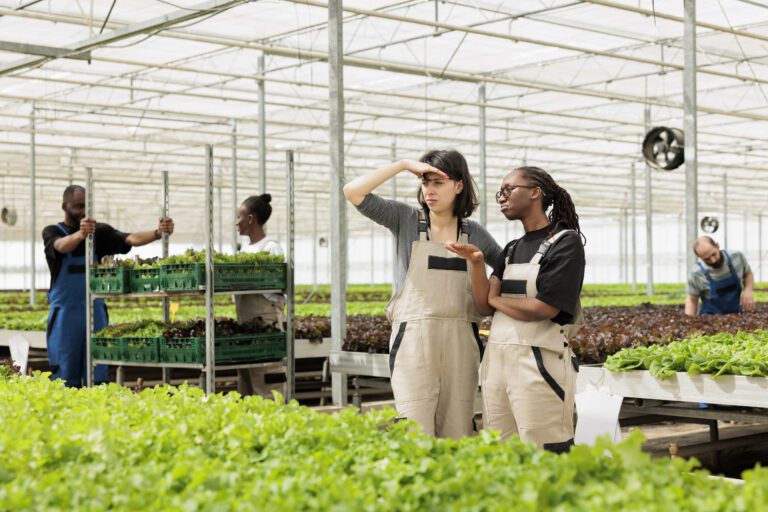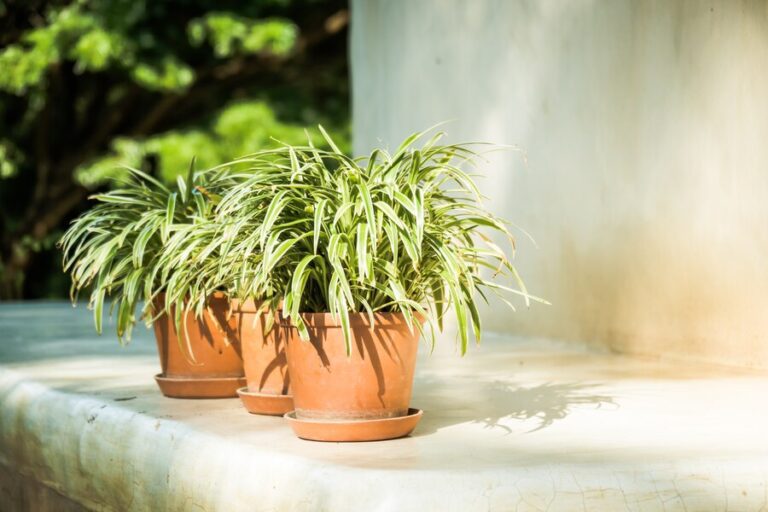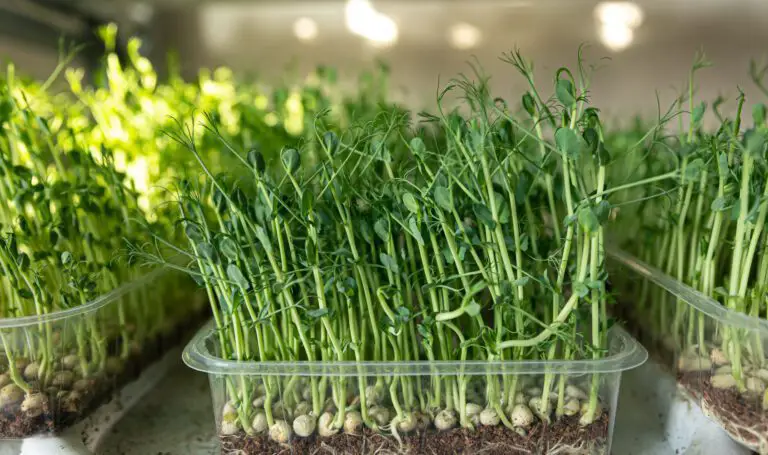Growing Onions from Seed: A Simple Technique
Selecting the right onion variety for seed cultivation
When selecting the right onion variety for seed cultivation, there are several factors to consider. First and foremost, it is important to choose a variety that is well-suited to your specific growing conditions. Different onion varieties have different temperature and moisture requirements, so it is essential to match the variety to your climate and soil type.
Additionally, you should take into account the intended use of the onions. Some varieties are better suited for fresh consumption, while others are more suitable for storage. Consider whether you want small or large onions, and whether you prefer yellow, red, or white varieties. Consulting seed catalogs or local agricultural extension offices can provide valuable information on the characteristics of different onion varieties.
In conclusion, choosing the right onion variety for seed cultivation is a crucial step in ensuring a successful harvest. By considering factors such as growing conditions and intended use, you can select a variety that will thrive in your garden and meet your needs. The next section of this article will explore the ideal growing conditions for onions in more detail.
Understanding the ideal growing conditions for onions
Onions are versatile and nutritious vegetables that can be grown in a variety of climates and conditions. However, to ensure successful cultivation, it is important to understand the ideal growing conditions for onions.
First and foremost, onions thrive in well-drained soil that is rich in organic matter. The soil should have a pH level between 6.0 and 7.5, which is slightly acidic to slightly alkaline. This ensures proper nutrient uptake and minimizes the risk of nutrient deficiencies or toxicities. Additionally, onions prefer loose, loamy soil that allows for good root development and easy bulb formation.
Another crucial factor in growing onions is the availability of sunlight. Onions are classified as full-sun plants, meaning they require at least six to eight hours of direct sunlight per day. Insufficient sunlight can lead to stunted growth and smaller bulb formation. If your garden has areas that are shaded for a significant portion of the day, it is advisable to choose a sunnier location or consider using artificial lighting to supplement natural sunlight.
By providing well-drained, fertile soil and ample sunlight, you can create the ideal growing conditions for onions. These factors not only promote healthy growth but also contribute to the development of robust, flavorful bulbs. However, it is essential to note that different onion varieties may have specific requirements, so be sure to research and select the right variety based on your region’s climate and soil conditions.
Preparing the soil for onion seed planting
When preparing the soil for onion seed planting, there are several key factors to consider in order to create the optimal environment for successful growth. Firstly, it is important to ensure that the soil is well-drained, as onions do not thrive in waterlogged conditions. This can be achieved by adding organic matter, such as compost or well-rotted manure, to improve the soil structure and enhance its ability to retain moisture while still allowing excess water to drain away.
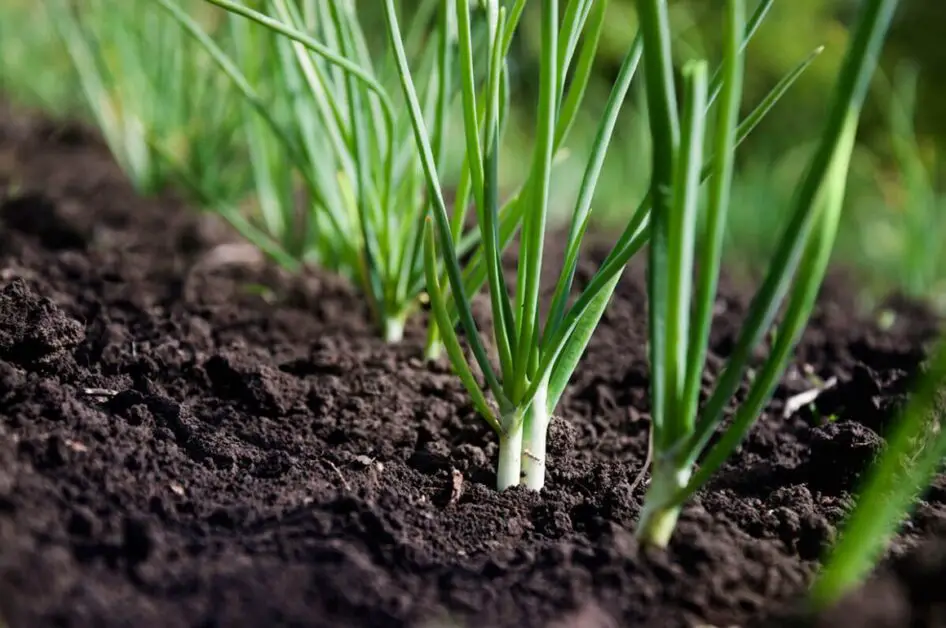
In addition, onions prefer a slightly acidic soil pH level ranging from 5.5 to 6.5. To determine the pH of the soil, a soil test kit can be used, and if necessary, amendments can be made by adding lime to raise the pH or sulfur to lower it. This will help to create an optimal growing environment for onion seedlings. Lastly, it is advisable to remove any weeds or debris from the planting area before sowing the seeds, as this will help to minimize competition and ensure that the onion seedlings receive the necessary nutrients for healthy growth.
By thoroughly preparing the soil before onion seed planting, gardeners can set the stage for successful growth and development of their onion plants. Taking the time to assess the drainage, pH, and cleanliness of the soil will create an ideal environment for the seeds to germinate and thrive, leading to a bountiful onion harvest.
The importance of proper seed storage and handling
Proper seed storage and handling are crucial aspects of successful onion seed cultivation. Seeds are delicate and susceptible to damage, so it is important to store them in appropriate conditions to maintain their viability. Moisture, temperature, and light exposure are factors that can significantly affect seed quality.
To ensure optimal storage conditions, seeds should be kept in a cool and dry place with low humidity. Airtight containers or seed envelopes can protect the seeds from moisture and prevent the growth of mold or fungi. Additionally, it is advisable to store the seeds in a dark area as exposure to light can decrease seed germination rates.
When handling onion seeds, it is important to take precautions to avoid damaging or contaminating them. Clean hands, sanitized tools, and sterilized containers should be used during the handling process to minimize the risk of introducing pathogens or unwanted substances. Furthermore, seeds should be carefully poured or scooped from their storage containers, ensuring that they are not exposed to any harsh conditions or rough handling.
By paying attention to proper seed storage and handling techniques, gardeners can maximize the viability and germination rates of their onion seeds. This, in turn, increases their chances of successful seed cultivation and ultimately leads to healthy and thriving onion plants.
Sowing onion seeds: depth, spacing, and timing
To successfully grow onions from seeds, it is crucial to understand the proper depth, spacing, and timing for sowing onion seeds. When it comes to depth, onion seeds should be sowed at a depth of approximately 1/4 to 1/2 inch. This allows for optimal soil contact while still ensuring the seedlings can easily emerge.
Regarding spacing, onion seeds should be sown in rows that are spaced about 12 to 18 inches apart. Within these rows, individual seeds should be spaced roughly 1 to 2 inches apart. This spacing allows each seedling to have enough room to grow and develop into healthy onion plants.
Timing is another important factor when sowing onion seeds. It is recommended to sow onion seeds in the early spring, as soon as the soil can be worked. This timing will allow the seedlings to establish themselves before the hot summer temperatures arrive. Additionally, onions thrive in cool weather, so sowing them early will ensure they have enough time to mature before the heat of summer sets in.
By understanding the ideal depth, spacing, and timing for sowing onion seeds, gardeners can set a strong foundation for successful onion cultivation. Following these guidelines will promote healthy seedling emergence, prevent overcrowding, and ensure optimal growth and development.
Providing the necessary water and sunlight for seed germination
When it comes to germinating onion seeds, providing the right amount of water and sunlight is crucial for successful growth. Water is essential for seed germination, as it helps to soften the seed coat and activate enzymes that initiate the process. However, it is important not to overwater the seeds, as excessive moisture can lead to fungal diseases or rot.
To provide the necessary water, a light misting or sprinkling of water is sufficient. This ensures that the soil remains moist but not soaked. It is important to monitor the moisture levels regularly and adjust the watering accordingly. Additionally, it is advisable to water the seeds from the bottom using a tray or saucer to prevent the disturbance of delicate seedlings.
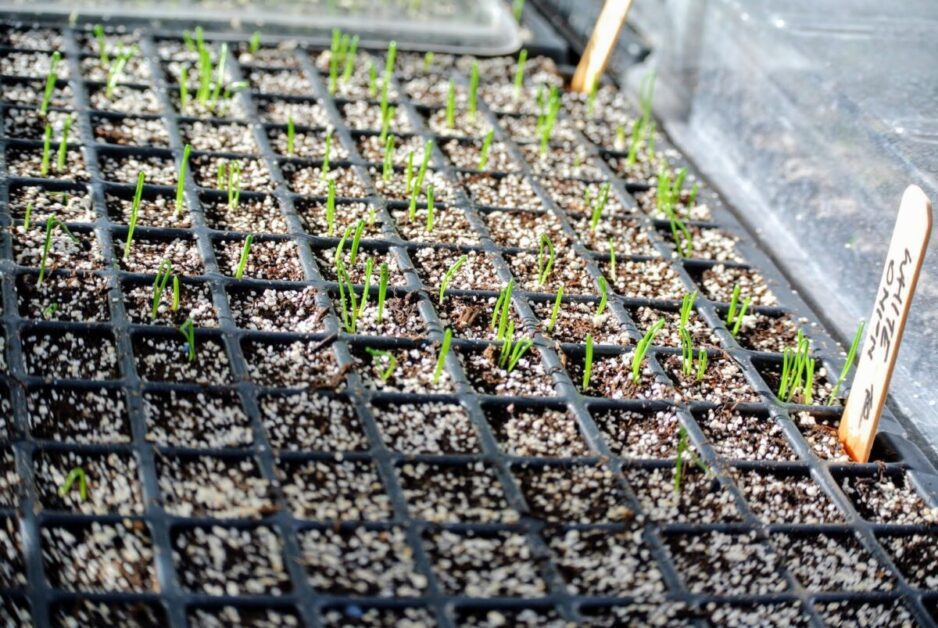
Sunlight is equally vital for seed germination. Onion seeds require direct sunlight to trigger the process of photosynthesis, which provides energy for growth. Place the seed trays or pots in a location that receives full sun for at least six hours a day. If you are growing onions indoors, consider using artificial grow lights to provide the necessary intensity and duration of light. Keep the seedlings under the light source for 14-16 hours a day to ensure proper development.
By ensuring the right balance of water and sunlight, you are providing the optimal conditions for onion seeds to germinate and thrive. Remember to monitor the moisture levels and light exposure regularly to promote healthy growth and avoid any potential issues caused by overwatering or insufficient sunlight.
Controlling weeds and pests during the onion seedling stage
Weeds and pests can pose significant challenges during the onion seedling stage, potentially impairing the growth and development of your cherished onion plants. To ensure the health and vigor of your seedlings, it is crucial to implement effective strategies for weed and pest control.
Managing weeds in the onion seedling stage is essential to reduce competition for nutrients, water, and sunlight. Regularly inspect your seedlings for any emerging weeds and promptly remove them by hand, ensuring that you uproot them completely, including their root systems. Mulching around the seedlings can also help suppress weed growth, conserving soil moisture and deterring weed seeds from germinating. Organic mulches such as straw, hay, or dried leaves are excellent options as they not only control weeds but also contribute to improving soil fertility over time.
Pests can wreak havoc on tender onion seedlings and compromise their growth. It is crucial to monitor your seedlings closely for any signs of pest infestation, such as chewed leaves, stunted growth, or distorted foliage. To combat common pests like aphids, thrips, or onion maggots, consider using organic insecticides specifically formulated for vegetable garden use. Additionally, employing physical barriers such as row covers can help protect your onion seedlings from pests, creating a barrier that prevents insects from reaching and damaging the plants. Regularly inspecting the undersides of leaves and treating any pest outbreaks early can significantly minimize crop losses and ensure the success of your onion seedlings.
Here is a table about the pests that can be seen during the onion seedling stage:
| Pest | Signs of Infestation |
|---|---|
| Onion Maggots | Yellowing and wilting of seedlings, small tunnels near the base. |
| Thrips | Silver or bronze streaks on leaves, distorted growth. |
| Cutworms | Seedlings cut off at the base, often during the night. |
| Flea Beetles | Tiny holes and pits on seedling leaves. |
| Wireworms | Stunted seedling growth, root damage. |
| White Rot Fungus | Yellowing, wilting, and a white, fluffy fungus near the bulb. |
| Damping-off Fungi | Seedlings collapsing at the soil line, decayed stems. |
Thinning out onion seedlings for optimal growth
Thinning out onion seedlings is a crucial step in ensuring optimal growth and development of your plants. As the seedlings emerge and begin to grow, it is important to thin them out to provide sufficient space and resources for each individual plant to thrive.
When thinning out onion seedlings, it is best to wait until they have reached a height of about 2-3 inches. This allows you to accurately assess their size and health, making it easier to determine which seedlings should be removed. Gently lift each seedling from the soil, being careful not to disturb the roots of the surrounding plants. Choose the weakest and most crowded seedlings to remove, leaving behind the strongest and healthiest ones. By doing so, you are creating more space, allowing the remaining seedlings to receive more nutrients, water, and sunlight, which will ultimately result in healthier and larger onions.
Remember, proper thinning is essential to avoid competition among the seedlings, which can lead to stunted growth, small-sized bulbs, and increased susceptibility to diseases and pests. By selectively removing some of the seedlings, you are promoting better air circulation, reducing the risk of fungal infections, and enhancing the overall vigor and productivity of your onion plants. Take your time and thin the seedlings gradually, ensuring that you leave sufficient space between each remaining plant for optimal growth.
Fertilizing techniques for healthy onion plants
Fertilizing plays a crucial role in ensuring the healthy growth of onion plants. To provide your onion plants with the essential nutrients they need, it is important to follow proper fertilizing techniques.
One key aspect of fertilizing onion plants is the timing. It is recommended to apply fertilizer when the plants have established a strong root system, typically around four to six weeks after planting. This allows the plants to absorb the nutrients efficiently and promotes vigorous growth. It is advisable to use a balanced fertilizer with equal amounts of nitrogen, phosphorus, and potassium (NPK) to provide a well-rounded nutrient supply. Additionally, incorporating organic matter into the soil, such as compost or well-rotted manure, can enhance soil fertility and provide a steady release of nutrients for the onion plants.
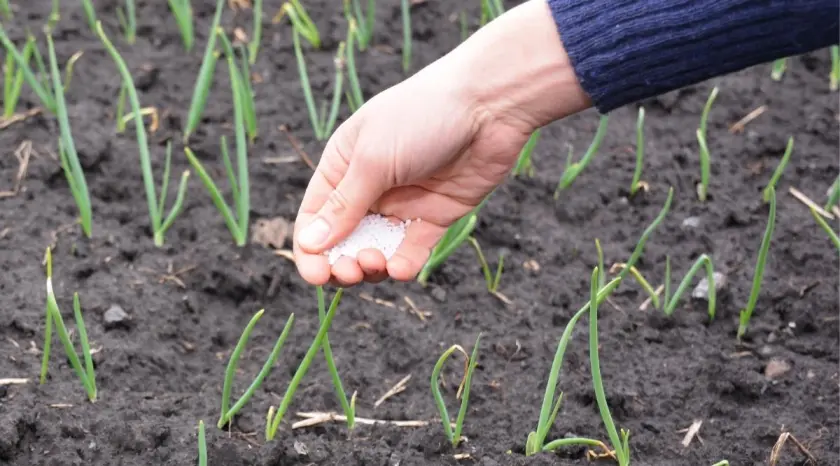
Another aspect to consider when fertilizing onion plants is the dosage. Applying excessive amounts of fertilizer can lead to detrimental effects, such as burning the roots or promoting excessive foliage growth at the expense of bulb development. Therefore, it is important to follow the recommended dosage provided on the fertilizer packaging, or consult with a local agricultural extension office for specific recommendations tailored to your region. Regularly monitoring the plants’ response to the fertilizer can also help you adjust the dosage if necessary, ensuring optimal growth and bulb development.
Proper fertilizing techniques are essential for cultivating healthy onion plants. By following the recommended timing and dosage, you can provide your onion plants with the necessary nutrients for vigorous growth and abundant bulb development. Remember to always refer to reliable sources and consult with experts for specific recommendations based on your unique gardening conditions.
Protecting onion seedlings from extreme weather conditions
Extreme weather conditions can pose a significant challenge when it comes to protecting onion seedlings. These young and delicate plants are particularly vulnerable to sudden temperature fluctuations, strong winds, heavy rainfall, or scorching heat. However, with a few precautionary measures, you can safeguard your onion seedlings and ensure their healthy growth.
One of the most effective ways to shield your onion seedlings from extreme weather conditions is to provide them with adequate shelter. Consider using row covers or floating row covers, which act as a protective barrier against harsh winds, heavy rain, and intense sunlight. These covers not only shield the seedlings but also create a microclimate that enhances their growth by promoting more stable temperatures and minimizing moisture loss.
In addition to providing physical protection, it is crucial to monitor the weather forecast regularly. By staying informed about upcoming weather patterns, you can take proactive measures in advance. For instance, if a cold front or frost is predicted, you may choose to cover the onion seedlings with a frost cloth or plastic sheeting to prevent them from getting damaged. Similarly, if heavy rain is anticipated, you can adjust your watering schedule to avoid over-saturating the soil, which can lead to root rot.
Remember, a proactive approach combined with appropriate sheltering techniques can go a long way in safeguarding your onion seedlings from extreme weather conditions. By providing them with the care they need during challenging conditions, you set the stage for their successful growth and eventual harvest.
Recognizing and addressing common onion seedling diseases
As onion seedlings begin to sprout, they may be susceptible to various diseases that can hinder their growth and overall health. One of the most common diseases that affects onion seedlings is damping-off, caused by fungal pathogens such as Pythium and Rhizoctonia. Damping-off typically leads to the collapse of seedlings at the soil level, contributing to significant losses in the early stages of cultivation.
To identify damping-off in onion seedlings, look for discolored or wilting stems, dark lesions at the base of the stem, and a characteristic damping-off odor. It is crucial to address this disease promptly to prevent further spread and protect the remaining healthy seedlings. To combat damping-off, practicing good sanitation is essential. Start by using sterilized soil mixtures and clean containers for seed starting. Additionally, proper watering techniques, such as avoiding overwatering and ensuring adequate drainage, will help create an environment less favorable for disease development.
Another common disease that affects onion seedlings is Downy mildew, caused by the fungal-like pathogen Peronospora destructor. Downy mildew can be particularly damaging in humid and cool conditions, leading to stunted growth, yellowing leaves, and characteristic whitish-gray, fuzzy growth on the underside of affected leaves.
To mitigate Downy mildew, it is important to monitor humidity levels and provide proper air circulation. Avoid overhead watering and instead focus on watering at the base of the plants. Applying a foliar spray containing copper-based fungicides can also help control the spread of this disease. Early detection and proper management are crucial to prevent severe damage to onion seedlings and ensure successful cultivation.
The table below shows the common diseases that can show up in onion seedling:
| Disease | Symptoms |
|---|---|
| Damping-off | Seedling collapse, decayed stems at the soil line. |
| Botrytis Neck Rot | Brown lesions on bulb neck, decay during storage. |
| Downy Mildew | Yellow lesions on leaves, purple-gray mold on undersides. |
| White Rot | Yellowing and wilting of foliage, white fluffy growth. |
| Onion Smut | Black spore masses on leaves and bulbs. |
| Fusarium Basal Rot | Yellowing and wilting of older leaves, rot at the base. |
| Pink Root | Pink or red discoloration of roots. |
| Purple Blotch | Purple spots with a yellow halo on leaves. |
By understanding the symptoms and implementing appropriate preventative measures, gardeners can effectively address common onion seedling diseases and promote healthy growth. Stay vigilant, regularly inspect your seedlings, and promptly take necessary actions to protect your onion crop’s future.
Transitioning onion seedlings to outdoor planting
When transitioning onion seedlings to outdoor planting, it is important to consider several factors to ensure their successful growth and development. Firstly, it is crucial to harden off the seedlings, gradually exposing them to outdoor conditions over a period of 7 to 10 days. This process helps the plants adjust to changes in temperature, wind, and sunlight, reducing the risk of transplant shock.
During this hardening off period, it is recommended to start by placing the seedlings outdoors in a shaded area for a few hours each day, gradually increasing their exposure to sunlight. Additionally, protect the plants from strong winds initially, gradually exposing them to gentle breezes to strengthen their stems. By gradually introducing the seedlings to outdoor conditions, you are giving them the chance to adapt and thrive in their new environment.
Once the seedlings have been hardened off, choose an appropriate location for transplanting. Onions prefer well-drained soil with a pH between 6 and 7.5. Select an area that receives full sunlight and has good air circulation. Prepare the soil by removing any weeds or debris and incorporating organic matter, such as compost or well-rotted manure, to improve its fertility and structure. Dig a hole or trench that is deep enough to accommodate the seedling’s root system and gently transplant the seedlings, ensuring that the soil is firmly pressed around the roots. Water the transplants immediately after planting to help settle the soil and provide moisture for the young plants.
By following these steps, you can successfully transition onion seedlings to outdoor planting, setting them up for healthy growth and abundant harvest. Remember to monitor their progress, providing appropriate care including watering, weeding, and fertilizing as needed. With proper attention and care, your onion seedlings will thrive in their new outdoor environment and reward you with a bountiful onion crop.
Caring for onion plants during the growing season
During the growing season, caring for onion plants is crucial to ensure their healthy development and yield. One important aspect of onion plant care is providing adequate water. Onions require regular and consistent watering, particularly during dry periods. The soil should be kept moist but not overly saturated, as excessive water can lead to rot and disease. It is advisable to water onions deeply once or twice a week rather than shallowly and frequently, as this encourages stronger root development.
Additionally, providing the right amount of sunlight is essential for the growth of onion plants. Onions thrive in full sun exposure, receiving at least 6-8 hours of direct sunlight each day. Adequate sunlight promotes photosynthesis, allowing the plants to produce energy for their growth. Therefore, it is best to select a sunny spot for planting onions and ensure that the surrounding area is free from shade-casting trees or structures.
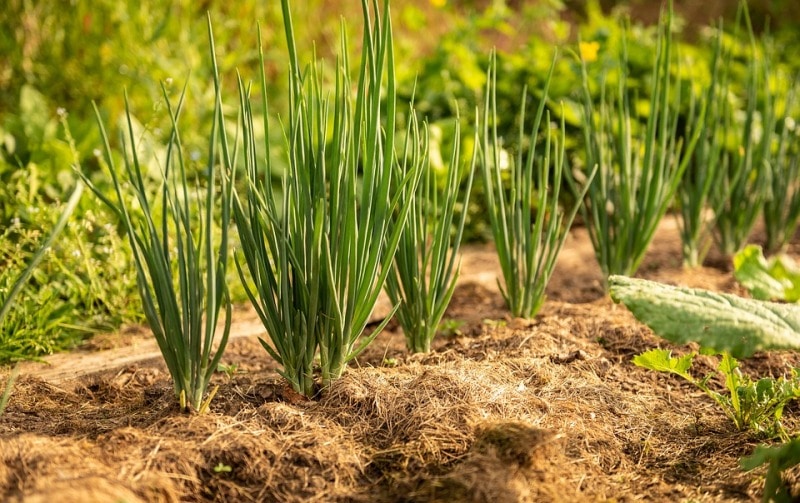
To enhance the growth and development of onion plants, regular fertilization is necessary. Onions are heavy feeders and require a steady supply of nutrients throughout the growing season. Before planting, it is recommended to incorporate a balanced granular fertilizer into the soil to provide a good foundation of nutrients. As the onion plants continue to grow, side-dressing with a nitrogen-rich fertilizer can be beneficial to promote leaf and bulb formation. However, it is important to follow the proper application rates to prevent fertilizer burn and minimize environmental impact. Monitoring the condition of the plants and adjusting the fertilization accordingly is essential for successful onion cultivation.
In conclusion, caring for onion plants during the growing season involves adequate watering, providing sufficient sunlight, and regular fertilization. By ensuring these essential elements, gardeners can nurture their onion plants and support their healthy growth and development. Stay tuned for further guidance on other aspects of onion plant care to achieve a fruitful harvest.
Harvesting and storing onions from seed-grown plants
When it comes to harvesting onions from seed-grown plants, timing is key. Onions are ready for harvest when the tops have completely dried out and turned brown. You can gently lift the bulbs from the soil using a garden fork or trowel, taking care not to damage them. Allow the harvested onions to cure for a couple of weeks in a well-ventilated area with low humidity. This helps to further dry out the outer layers, extending their shelf life. Once cured, trim off any excess foliage and store the onions in a cool, dry place with good air circulation. Mesh bags or crates are great options for storage as they allow for proper ventilation and prevent moisture buildup. Properly stored onions can last for several months, providing you with a steady supply of homegrown goodness.
Storing onion seeds for future use is equally important to ensure a successful harvest in the following seasons. Once your onion plants have bolted and produced seed heads, it’s time to collect the seeds for saving. Allow the seed heads to fully ripen and dry out on the plant. Gently rub the seed heads to loosen the seeds, or you can cut the seed heads and place them in a paper bag to further dry out. Once the seeds are fully dry, remove any chaff or debris and store them in a cool, dark place in a labeled, airtight container. It is recommended to store onion seeds in a refrigerator or freezer to maintain their viability for longer periods. When properly stored, onion seeds can remain viable for up to three years. Be sure to check the germination rate before planting the stored seeds to ensure optimal success in your next planting season.
Watch the video to learn how to grow your own onion from seed.
Troubleshooting common issues in onion seed cultivation
When it comes to onion seed cultivation, there can be a few common issues that can arise. One such issue is poor seed germination. If you notice that only a small percentage of your onion seeds are sprouting, there are a few possible reasons for this. Firstly, it is important to ensure that you are using fresh and high-quality seeds. Using old or improperly stored seeds can lead to low germination rates. Secondly, the temperature and moisture levels during germination can affect the seed’s ability to sprout. Onions prefer a temperature of around 70°F (21°C) and require consistent moisture until germination occurs.
Another issue that gardeners may face is the development of weak and thin onion seedlings. This can be attributed to a lack of proper lighting. Onions require full and direct sunlight for at least 12-14 hours a day. If your seedlings are growing in a shaded area or are not receiving enough light, they may become thin and weak. The use of grow lights or ensuring that your seedlings are placed in a spot with ample sunlight can help to rectify this issue. Additionally, overcrowding can also lead to weak seedlings. It is important to thin out your onion seedlings, giving them enough space to grow and develop sturdy stems. By addressing these common issues, you can maximize the success of your onion seed cultivation and enjoy a bountiful harvest.
Tips and tricks for successful onion seed growing
When it comes to successfully growing onions from seed, there are a few tips and tricks that can greatly increase your chances of a bountiful harvest. Firstly, choosing the right onion variety for seed cultivation is crucial. Consider factors such as flavor, storage capabilities, and disease resistance. Popular varieties include yellow onions like ‘Copra’ and ‘Texas Early Grano’, as well as red onions such as ‘Red Burgundy’ and ‘Red Zeppelin’.
Proper timing is key when sowing onion seeds. Start indoors around 8-10 weeks before the last expected frost date in your area. Fill seed trays with a well-draining seed starting mix and lightly press the seeds into the soil surface. Aim for a seed spacing of about half an inch. Cover the seeds with a thin layer of seed starting mix and gently water the tray from the bottom to avoid disturbing the seeds. It’s important to provide consistent moisture and warmth during germination, so cover the trays with a plastic dome or wrap them in plastic wrap until seedlings emerge. These simple tips will set you on the path to successful onion seed growing.
How do I choose the right onion variety for seed cultivation?
When selecting an onion variety for seed cultivation, consider factors such as the climate and growing conditions in your area, as well as your preferred taste and storage requirements.
What are the ideal growing conditions for onions?
Onions thrive in well-drained soil with a pH level between 6.0 and 7.0. They require full sun exposure for at least 6 hours a day and prefer cooler temperatures between 55°F and 75°F.
How should I prepare the soil for onion seed planting?
Prior to planting onion seeds, prepare the soil by removing any weeds, loosening it with a garden fork or tiller, and incorporating organic matter such as compost or well-rotted manure for improved fertility.
How important is proper seed storage and handling?
Proper seed storage and handling is crucial for maintaining seed viability. Store onion seeds in a cool, dry place in airtight containers to protect them from moisture and temperature fluctuations.
What is the recommended depth, spacing, and timing for sowing onion seeds?
Sow onion seeds about ¼ to ½ inch deep, with a spacing of 1 to 2 inches between each seed. The optimal time for sowing onion seeds depends on your climate, but it is typically done in early spring.
How much water and sunlight do onion seeds need for germination?
Onion seeds require consistent moisture during germination. Keep the soil evenly moist but not waterlogged. Additionally, provide at least 6 hours of full sun exposure for proper seed germination.
How can I control weeds and pests during the onion seedling stage?
To control weeds, regularly remove them by hand or use organic mulch to suppress their growth. Use organic pest control methods such as companion planting, insecticidal soaps, or neem oil to manage common pests like aphids or onion maggots.
When and why should I thin out onion seedlings?
Thin out onion seedlings when they are about 4-6 inches tall to provide enough space for proper bulb development. Thinning helps prevent overcrowding, improves air circulation, and reduces competition for nutrients.
What are the recommended techniques for fertilizing onion plants?
Apply a balanced fertilizer rich in nitrogen, phosphorus, and potassium before planting onion seeds. Additionally, side-dress the plants with nitrogen-rich fertilizer every few weeks during the growing season to promote healthy growth.
How can I protect onion seedlings from extreme weather conditions?
Shield onion seedlings from extreme weather conditions such as frost by covering them with row covers or using cold frames. Additionally, provide shading during hot summer days to prevent sunburn.
What are some common onion seedling diseases and how can they be addressed?
Common onion seedling diseases include damping-off, downy mildew, and onion smut. To address these diseases, ensure proper soil drainage, avoid overhead watering, and consider using disease-resistant onion varieties.
How do I transition onion seedlings to outdoor planting?
Harden off onion seedlings by gradually exposing them to outdoor conditions over a period of 7 to 10 days. Start with a few hours of outdoor exposure and gradually increase the duration and intensity of sunlight and wind.
What care do onion plants require during the growing season?
Onion plants require consistent watering, occasional weeding, and monitoring for pests and diseases throughout the growing season. Apply mulch to conserve moisture and prevent weed growth.
When and how should I harvest and store onions from seed-grown plants?
Harvest onions when the tops have fallen over and started to dry. Carefully lift the bulbs from the ground, remove excess soil, and allow them to cure in a warm, dry, and well-ventilated area before storing in a cool, dark place.
What are some common issues in onion seed cultivation and how can I troubleshoot them?
Common issues in onion seed cultivation include inadequate germination, bulb splitting, and premature bolting. Troubleshoot these problems by adjusting watering and fertilizing practices, improving soil drainage, and selecting appropriate onion varieties.
What are some tips and tricks for successful onion seed growing?
Some tips for successful onion seed growing include starting seeds indoors, using transplants for early planting, ensuring proper air circulation, and providing consistent and adequate moisture throughout the growing season.

